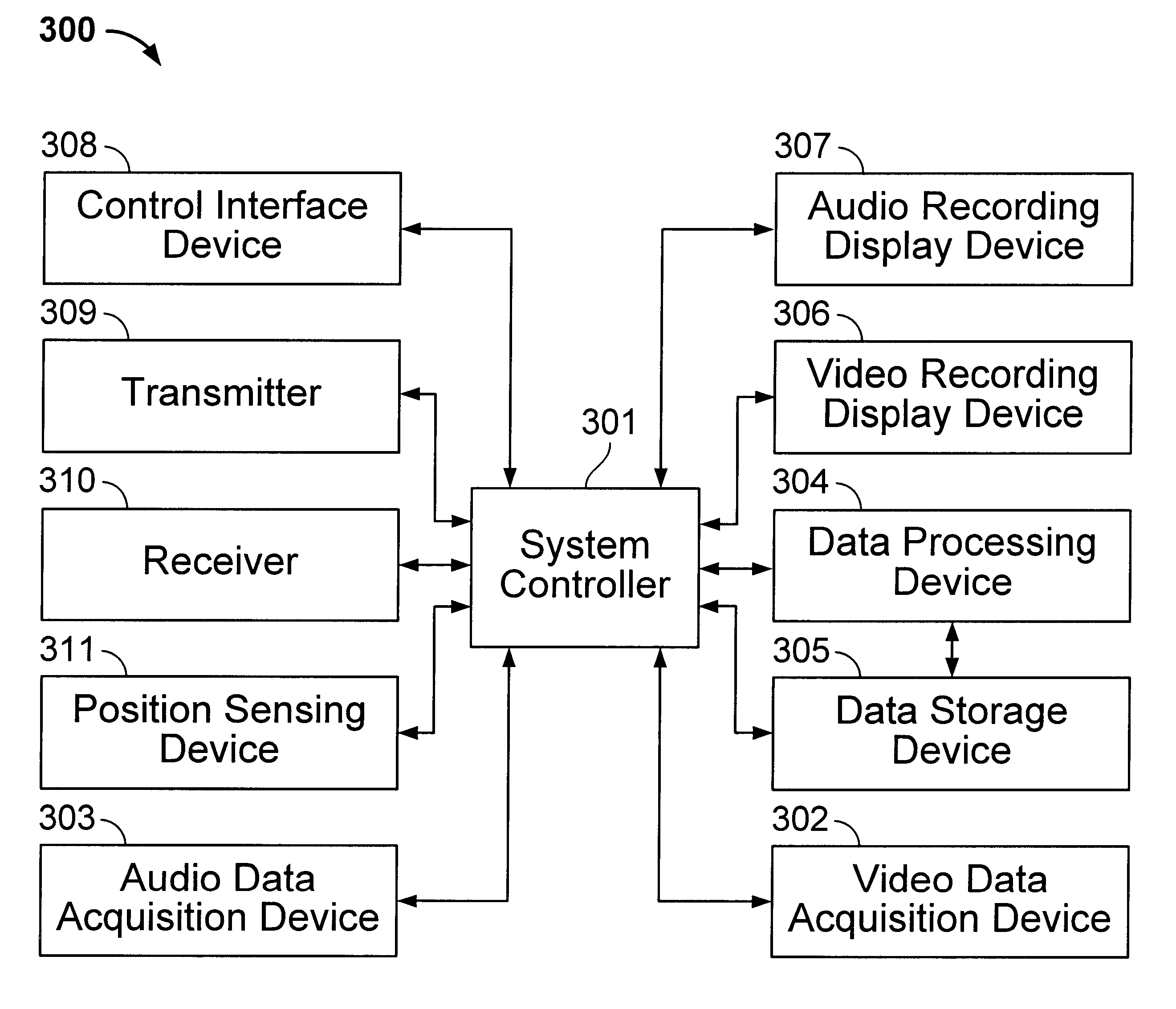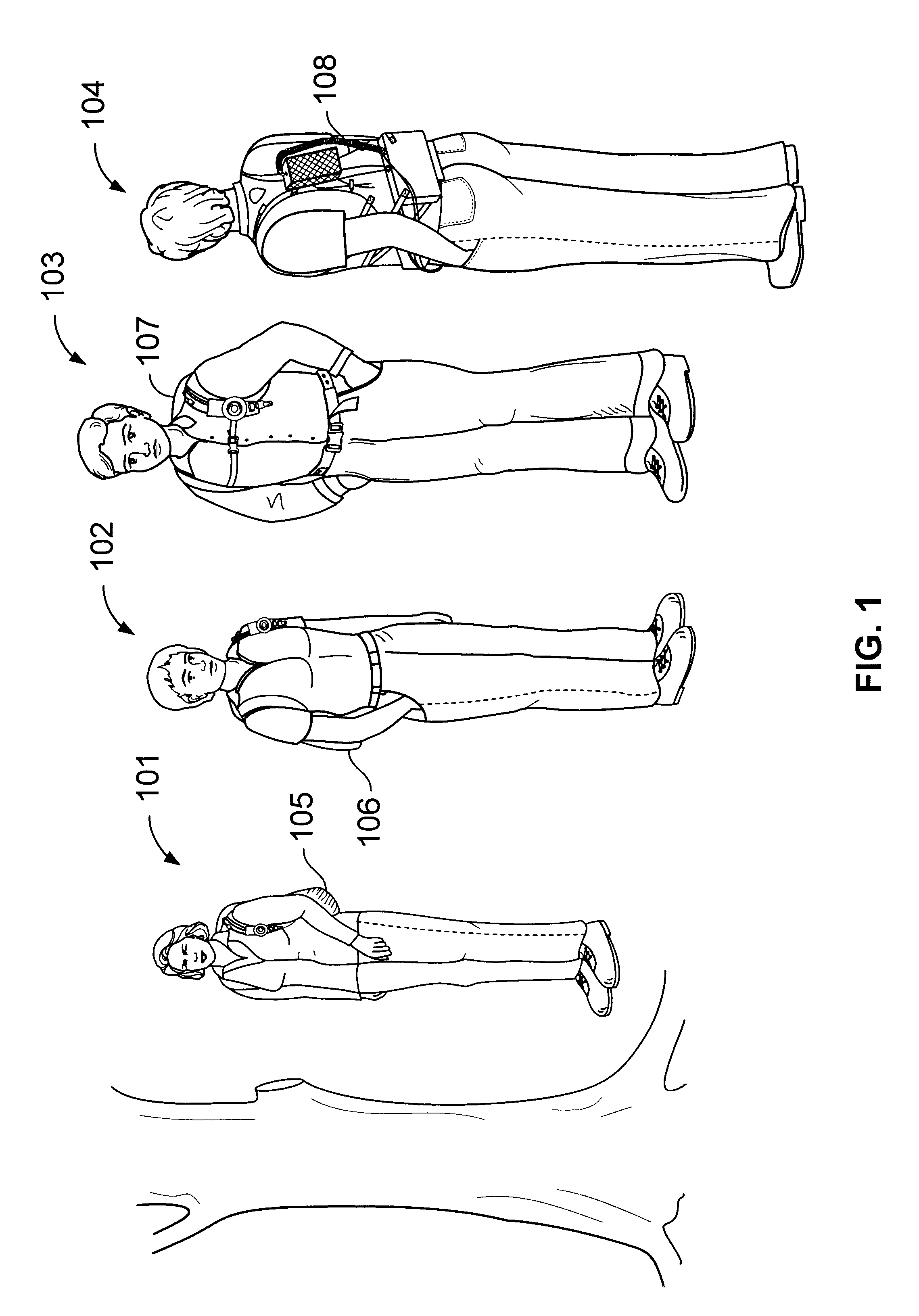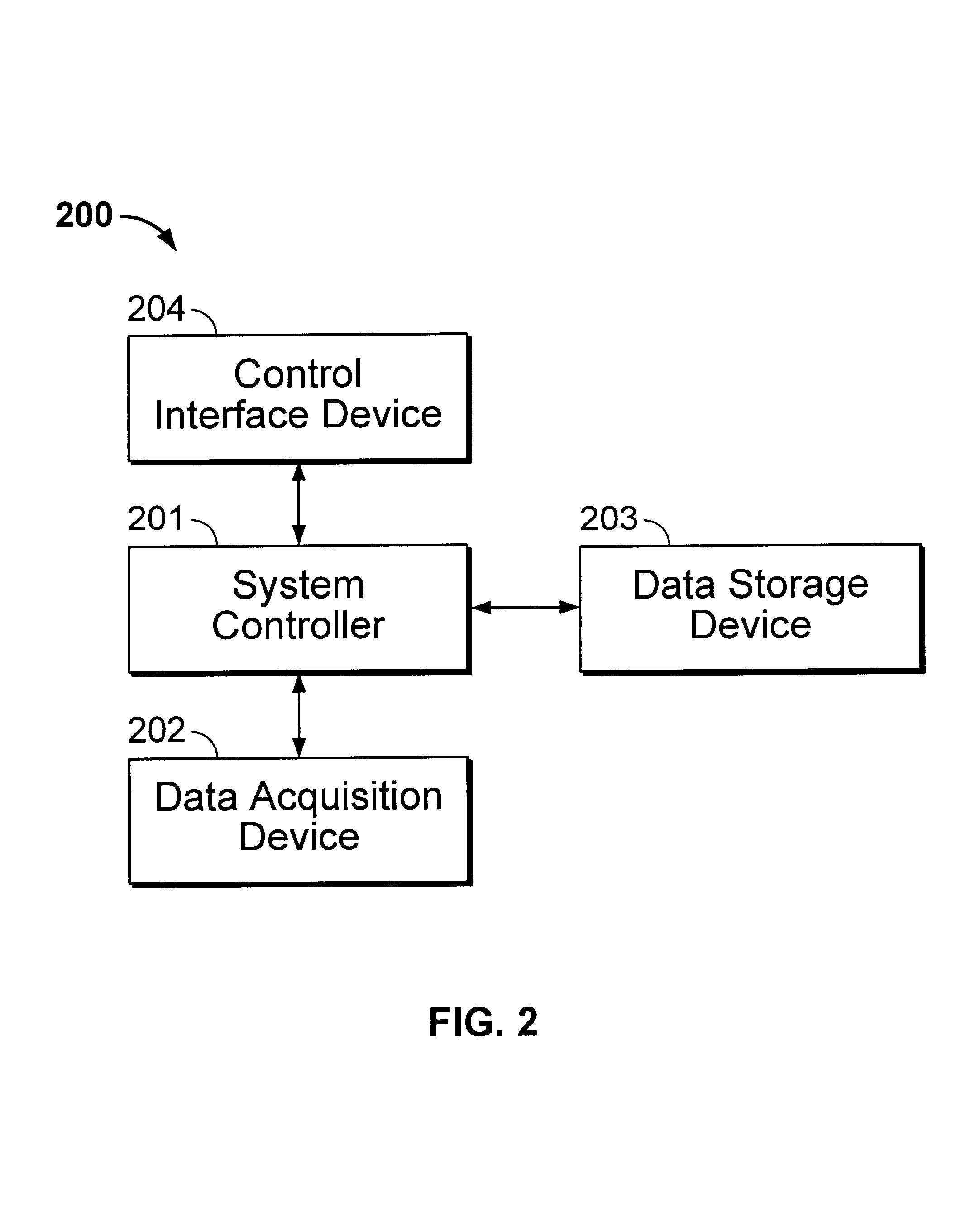However, existing devices for obtaining a visual
record of an event have characteristics that can diminish their desirability as tools for recording an event, particularly when the person operating the recording device desires to participate in the event.
However, still photographs can be deficient in representing the content of an event.
It is also difficult to capture interesting activity that occurs spontaneously, since, absent fortuity, a photograph will not be taken during the occurrence—or, at least, at the beginning of the occurrence—of such activity.
Further, the content that is captured lacks context and motion that can convey the nuance and / or
vitality of the event.
In addition to deficiencies in the recording of content, use of a
still camera also typically requires sufficient attention from the operator of the camera (e.g., aiming of the camera and setting of
camera control parameters) that the camera operator cannot participate in the event when a photograph is being taken.
The camera operator can be further distracted from participation in the event by the need to carry the camera even when the camera is not in use.
(This may be particularly undesirable when a primary purpose of the camera operator in obtaining the visual recording is to facilitate later reminiscence of the event.)
Further, the use of a typical
still camera is readily apparent to other people in the vicinity of the camera operator; such awareness of the use of the camera may cause people to alter their activity (if they perceive that they are within the
field of view of the camera) or otherwise interfere with the taking of photographs that
record the “natural” occurrence of the event.
However, since the camcorder operator must focus a considerable amount of attention on operation of the camcorder, the camcorder operator is, to a significant extent, prevented from being an active participant in the event being recorded.
Moreover, the inconvenience of using a camcorder may generally deter the camcorder operator from using the camcorder, thus tending to reduce the number of events that are recorded or the amount of a particular event that is recorded.
Typical camcorders also have physical deficiencies which can inhibit their operation.
For example,
battery capacity is often limited to an extent that undesirably limits the duration of time that the camcorder can operate without interruption.
Consumer camcorders also typically are constructed such that the quality of the audio recording obtained may be deficient: the
microphone(s) commonly pick up
background noise associated with operation of the camcorder motor and are typically positioned at a single location so that sound is sensed from only one point of view.
Recording of a group event using a
still camera or camcorder suffers from the deficiencies (e.g., inhibition of participation in the event by the operator of the recording device, as well as lack of presence of the operator in the recording of the event) described above.
However, aside from those deficiencies, recording of a group event presents additional challenges.
For example, the use of a single recording device—of any type—to record a group event limits the content of the recording, since the recording can only be obtained from a
single point of view.
(This is especially so because camcorders are so cumbersome to use.)
Additionally, even if multiple devices are used to record a group event, still cameras and camcorders suffer from other limitations.
For example, existing such devices do not provide for sharing of recordings between devices during the event, thus inhibiting or preventing coordination of recording by multiple devices so as to best capture the content of the event (e.g., so as to increase the amount of different content recorded, increase the number of participants recorded and / or record interesting content from multiple
viewpoints).
Additionally, existing
consumer devices do not provide for synchronization in time or coordination in space of the recordings obtained by the devices, making it difficult to later present the recordings together in a coherent fashion.
However, the inability to coordinate and synchronize recordings obtained by multiple still cameras and / or camcorders inhibits the use of those multiple recordings in a manner that mitigates the above-described tension between visual and audio recording (e.g., by mixing a visual recording of content obtained at a distance by one recording device with an audio recording acquired near that content by a different recording device).
However, storing marking data on a videotape (or other linear data storage medium) has disadvantages.
For example, searching for marks can take an undesirably long time, because the entire recording between a current location within the recording and a marked location within the recording must be traversed to reach the marked location.
Additionally, for a similar reason, moving from a display of one marked part of a recording to another marked part of a recording can take an undesirably long time.
 Login to View More
Login to View More  Login to View More
Login to View More 


